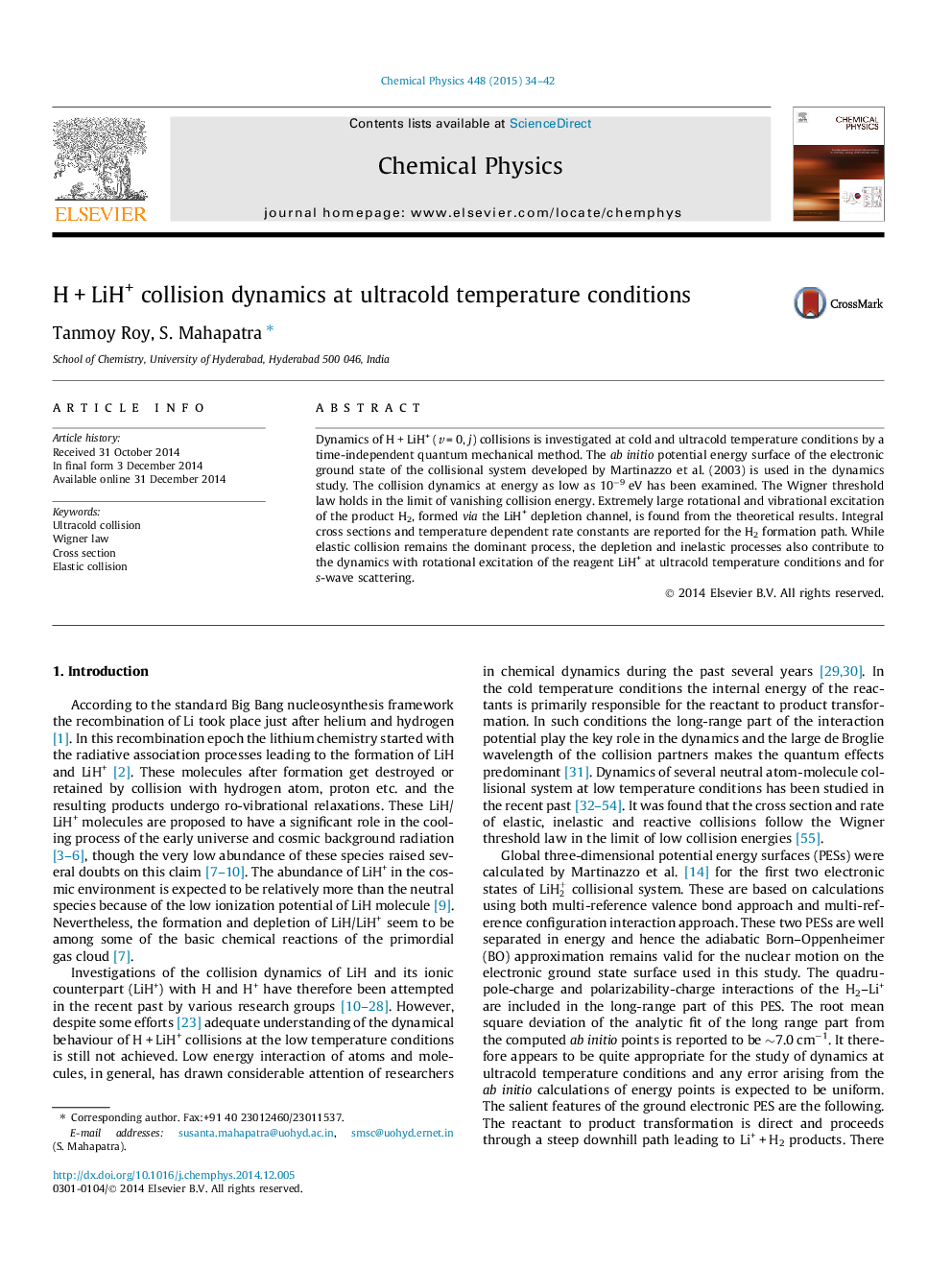| Article ID | Journal | Published Year | Pages | File Type |
|---|---|---|---|---|
| 5373373 | Chemical Physics | 2015 | 9 Pages |
â¢Dynamics of the H + LiH+ reaction is studied at the ultracold condition.â¢The collision dynamics is studied up to a lowest collision energy of 10â9 eV.â¢Elastic scattering dominate over the LiH+ (v = 0, j) reactive and inelastic scattering.â¢Thermal rate constant and the cross section of the LiH+ (v = 0, j = 0) depletion processes are reported.â¢Rotational excitation of the reagent decreases the reaction probability.
Dynamics of H + LiH+ (v = 0, j) collisions is investigated at cold and ultracold temperature conditions by a time-independent quantum mechanical method. The ab initio potential energy surface of the electronic ground state of the collisional system developed by Martinazzo et al. (2003) is used in the dynamics study. The collision dynamics at energy as low as 10â9 eV has been examined. The Wigner threshold law holds in the limit of vanishing collision energy. Extremely large rotational and vibrational excitation of the product H2, formed via the LiH+ depletion channel, is found from the theoretical results. Integral cross sections and temperature dependent rate constants are reported for the H2 formation path. While elastic collision remains the dominant process, the depletion and inelastic processes also contribute to the dynamics with rotational excitation of the reagent LiH+ at ultracold temperature conditions and for s-wave scattering.
